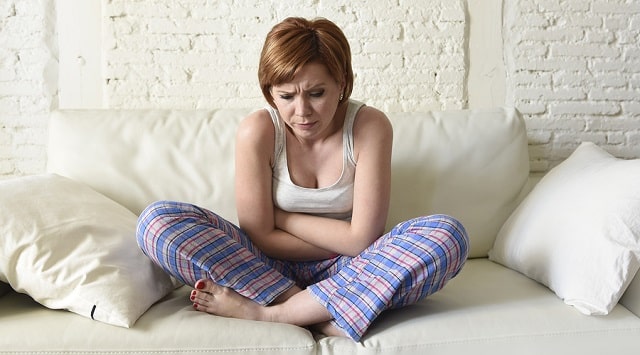
Abortion is one of the most important disorders in the lives of many women worldwide and not only that, it kills them. In fact, their high mortality is one of the main reasons why unsafe abortions are prohibited in many countries [1].
In order to talk about abortion, we have to be facing an embryo or fetus less than 20 weeks gestation, which meets several other requirements. The alterations that occur in the abortion (<20 weeks) are very different from those that occur later (>20 weeks).
Although this pathology is accompanied by many important symptoms, pain is one of the most relevant, is a fundamental characteristic that must be taken into account, and always leads to a worse prognosis [2].
Pain in this pathology can have many origins, which will depend on the different triggers and the way in which it develops. Not all abortions are accompanied by pain; it is likely that the fetus will sometimes die without the mother being aware of it [3].
In fact, most of the time those procedures are complicated with other associated pathologies, from small infectious processes to large sepsis (generalized infections with great vital commitment), causing a lot of pain. Most abortions are unsafe and are not performed by professionals, in fact, they are known as “unsafe abortions”, and have the highest risk of maternal mortality among all.
These associated pathologies may also be triggers for various pain conditions that may be directly associated with abortion, or indirectly due to over-infection of placental remains or improperly performed procedures.
Despite the fact that pain can occur in different ways and be affected by different factors, we will try to create a compendium to explain the most frequent causes, both during and after, of pain related to abortion.
The origin of pain in “normal” conditions
It is important to remember, as mentioned above, that not all abortifacient processes are pain-related. There are some exceptions. However, most of them are, and the mechanism of action by which they appear can vary greatly [3].
Talking about “normal conditions” in abortion – a pathological process – can be difficult. However, we refer to the typical presentations and the most frequent stimuli that have life in this kind of alterations.
The first and most important thing is that despite the underlying causes and the various triggers, the truth of the case is that it seeks to increase uterine activity [4].
The uterus, of course, is the one that contains your baby.
When it reaches full maturity, the body of the uterus begins to contract, sending direct stimuli to the cervix that trigger the release of oxytocin, leading to a cycle of greater contraction.
Something similar occurs in abortion. In this case, the increase in uterine activity may be mediated by certain prostaglandins (inflammatory mediators) following the release of endotoxins (infectious processes), by genetic alterations (miscarriages), traumatic events, etc.
Each of these processes only seeks for the contractions of the uterus to initiate (or increase) so that this endless cycle of the release of oxytocin, the hormone responsible for the contraction, begins.
This produces a series of modifications at the level of the neck, which stretches and dilates as if a normal baby were to come out through it. As if this were not enough to cause unbearable pain, the pelvis also adapts.
Therefore, you will be having abrupt changes (for which you were not prepared) that involve physical changes to your uterus and pelvis.
This pain, described as abdominal cramps, not only occurs in the anterior face of the abdomen, at the level of the uterus as the typical pain of menstruation but can also feel at the level of the lower back or upper abdomen, the epigastrium.
Pain after Abortion – Complications
Always The Pain
Without any related pathology, it can be considered a direct complication of abortion. Many women involuntarily extend the time during which they are under this pain, and this is due to the noxious sensory stimulation they experience throughout the course of that event, coupled with fear and anxiety.
It is possible that the amount of pain varies, not only by the individual characteristics of each woman but also by culture. Experiences are capable of mediating the expression of pain, many women may even feel guilt and unconscious self-flagellation.
In fact, studies indicate that women are likely to experience less pain after abortive procedures if everything they are going to feel afterward is clearly explained to them [5].
One thing that is certain is that there is no clear relationship between gestation time and pain. However, those who suffer from it report that they feel something similar to menstrual pain, but perhaps with a little more intensity and, of course, totally continuous.
It is usually necessary to use some medications in order to be able to control the pain in the long term [6].
Infections
Another major complication, with severe pain, is infection [7]. In natural conditions, it occurs after uterine evacuation. The frequency of these cases is likely to be generally low, with minor complications that can even be managed from home.
However, the pain presented both with stimulation (palpation of the uterus) and without stimulation can be terrible.
The greatest concern regarding this type of infection is postabortion sepsis, which, although less frequent, often ends up being fatal. In this case, it is necessary to hospitalize the patient and place her with specific endovenous therapy.
Both processes are usually due to the presence of remains after the abortion. We are not talking specifically about parts of the fetus (which is also possible) but part of the placenta that is not removed manually or naturally, which ends up being infected by the flora that inhabits the female reproductive system.
Placental Remains
Although it is not one of the most serious, it can be the source of major complications [7]. This is the most common and, in fact, is also the most common cause of severe abdominal pain following abortion.
In this case, it is not the only symptom but is also accompanied by bleeding and expulsion of clots or remains.
It is important to note that not always the expulsion of clots (accumulation of coagulated blood) means that you are expelling the remains of the placenta. The latter has a slightly different coloration, as well as consistency, and you need to expel each and every one of them in order to stay healthy.
After the abortion, you may be prescribed strong pain medication, as well as ultrasound studies to diagnose if any remains remain in your uterus.
Suffering from Pain May Be Up to You
While it is true that the great pain of abortion can become something totally involuntary, most people can decrease the risk of abortion occurring, and with it, the pain.
Many women end up choosing unsafe options and making serious mistakes by not allowing a specialist to treat them, but instead perform home abortions where there is a high probability of infection and the presence of placenta remnants.
Many of the causes of abortion pain can be treated. The body responds well to analgesics, especially those that are intravenous [6].
While this is a major complication, it is also one of the most important warning signs that you should be aware of when you are pregnant.
References
-
1. Singh S., Wulf D., Hussain R., Bankole A., Sedgh G.. Abortion worldwide: A decade of uneven progress. 2009; Guttmacher Institute: New York, Available at: http://www.guttmacher.org/pubs/Abortion‐Worldwide.pdf
2. Boklage CE. Survival probability of human conceptions from fertilization to term. Int J Fertil 1990;35:75-94.
3. Guía de práctica clínica, Prevención, diagnóstico y referencia de la Amenaza de Aborto en el primer nivel de atención. (2011) CENETEC.
4. Kavalier F. Investigation of recurrent miscarriages. Editorial. 2005:331:121-2.
5. Johnson JE. Effects of accurate expectations about sensations on the sensory and distress components of pain. J Pers Soc Psychol 1973;27:261-275.
6. Ashok PW, Penney GC. An effective regimen for early medical abortion: a report of 2000 consecutive cases. Human Reprod 1998;13:2962-2965.
7. Hakim-Elahi E, Tovell HM. Complications of first-trimester abortion: a report of 170,000 cases. Obstet Gynecol 1990;76:129-135.
Image: Bigstock



